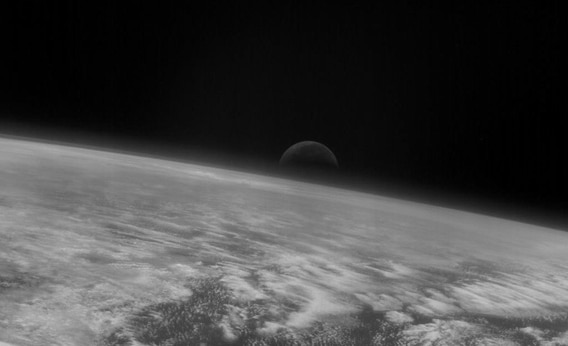Create a free profile to get unlimited access to exclusive videos, sweepstakes, and more!
Moonrise From Space

In March 2004, the European Space Agency launched the Rosetta probe on its way to the comet 67P/Churyumov-Gerasimenko. Itâs still on its way thereâspace is big. But it made a few detours along the way, including a pass of Mars, three of Earth (to gain energy and boost it along its way), and two asteroids (Steins and Lutetia).
On Mar. 3, 2005, during the first Earth flyby, it took several images of our planet, including this achingly beautiful picture of the crescent Moon rising over the limb of our home world:
My scientist brain immediately notices that the Moon looks small compared to Earth because of how close Rosetta passed to usâjust under 2000 kilometers (1200 miles) above Earthâs surface, a fantastically close shaveâas well as how dark the Moon looks. Its surface is, on average, far less reflective than Earthâs, so to expose the planet correctly means the Moon looks much fainter.
But the part of my brain that appreciates art and beauty just sees the panoply of clouds, the graceful arc of the world, the thinner arc of atmosphere (visible on the left) allowing us to breathe, and the ghostly, milky looming of the Moon.
This is science, this is engineering, and this is art.
Some of the artistry came long after. My friend Emily Lakdawalla, writer for The Planetary Society Blog, took the raw image from Rosetta and reprocessed it to clean it up, enhancing the natural beauty stored in those zeros and ones. The raw image is inset here to give you an idea of what she did; click both to see them far larger.
Rosetta is due to reach the comet next year. It will launch a probe that will physically land on the surface of the comet, the first time humanity will have achieved such a feat. I can only imagine what wonders it will reveal then. Given that Rosetta took one of my favorite pictures of Earth of all time, I expect amazing things come 2014.


























